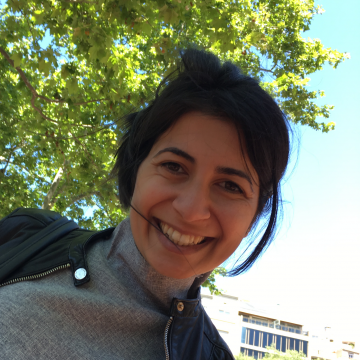ACE
: Autonomic Software Engineering for online cultural experiences
A Project coordinated by IIIA.
Principal investigator:
Collaborating organisations:
Goldsmiths College, London and
IRIT, Toulouse
Funding entity:
ERA-NET
Funding call:
Funding call URL:
Project #:
ACE
Total funding amount:
0,00€
IIIA funding amount:
Duration:
01/Sep/2011
- 31/Aug/2013
Extension date:
This project is about exploiting the predominance of social networking using autonomic software agents to enrich, encourage and enliven engagement with online cultural artefacts such as from a museum or a gallery. With the current problems in the European financial debt, many cultural institutions are planning to shorten the length that visitors can physically enter. In the UK for example we have heard of plans that the British Museum will close earlier and possibly shut down completely for one day a week because of the massive cuts in funding that were presented in the UK Chancellors speech detailing reduction in money for the cultural sector. The basic idea is to have your friends, museums, art galleries and theatres all in your pocket through your handheld device.
In this project we will harness the power of autonomic agents that work on behalf of human users in an infrastructure that allows for these agents to communicate and negotiate on behalf of their human users to facilitate a collective and social experience of online cultural visits. For example, we could imagine a scenario where 4 students are visiting an art museum with the desire to purchase something (a print or a physical copy of an artefact for example) for a friend. They would wish to be able negotiate about what to see or experience online, what additional information they want to consider, what comments from what previous visitors over any commentary they individually or collectively want to leave for others and, eventually, over what they collectively choose to purchase for their friend.
We are concerned with the fundamental question of building autonomic agents that can represent their users needs, argue and negotiate on behalf of their users with other software and human agents, maintain models of the other autonomic agents in the system and proactively develop plans and scenarios for their human counterparts. In order for autonomic agents to interact in open systems such as those we are describing we will use the BDI agent architecture (arguably the most important symbolic agent architecture of the last 20 years) on a well-developed infrastructure (called electronic institutions) that facilitates autonomic agent interaction.
In short we believe BDI architectures represent the stronger and best-developed software engineering device for building autonomic agents, that electronic institutions is the best developed infrastructure for supporting the interaction of autonomous interaction, and that the idea of enabling richer social exploration of cultural artefacts online is a timely and critical case study to address.
In this project we will harness the power of autonomic agents that work on behalf of human users in an infrastructure that allows for these agents to communicate and negotiate on behalf of their human users to facilitate a collective and social experience of online cultural visits. For example, we could imagine a scenario where 4 students are visiting an art museum with the desire to purchase something (a print or a physical copy of an artefact for example) for a friend. They would wish to be able negotiate about what to see or experience online, what additional information they want to consider, what comments from what previous visitors over any commentary they individually or collectively want to leave for others and, eventually, over what they collectively choose to purchase for their friend.
We are concerned with the fundamental question of building autonomic agents that can represent their users needs, argue and negotiate on behalf of their users with other software and human agents, maintain models of the other autonomic agents in the system and proactively develop plans and scenarios for their human counterparts. In order for autonomic agents to interact in open systems such as those we are describing we will use the BDI agent architecture (arguably the most important symbolic agent architecture of the last 20 years) on a well-developed infrastructure (called electronic institutions) that facilitates autonomic agent interaction.
In short we believe BDI architectures represent the stronger and best-developed software engineering device for building autonomic agents, that electronic institutions is the best developed infrastructure for supporting the interaction of autonomous interaction, and that the idea of enabling richer social exploration of cultural artefacts online is a timely and critical case study to address.
2014
Angela Fabregues,
& Carles Sierra
(2014).
HANA: a Human-Aware Negotiation Architecture.
Decision Support Systems.
[BibTeX]
[PDF]
2013
Nardine Osman,
Mark d'Inverno,
Carles Sierra,
Leila Amgoud,
Henri Prade,
Matthew Yee-King,
Roberto Confalonieri,
Dave Jonge,
& Katina Hazelden
(2013).
An Experience-Based BDI Logic: Motivating Shared Experiences and Intentionality.
39th Annual Conference of the IEEE Industrial Electronics Society (IECON 2013)
.
[BibTeX]
[PDF]
Dave Jonge,
Bruno Rosell,
& Carles Sierra
(2013).
Human Interactions in Electronic Institutions.
C.I. Chesnevar, E. Rivaherrera, S. Ossowski, & G. Vouros (Eds.),
2nd International Conference on Agreement Technologies
(pp. 75-89).
Springer.
[BibTeX]
[PDF]
Matthew Yee-King,
Roberto Confalonieri,
Dave Jonge,
Katina Hazelden,
Carles Sierra,
Mark d'Inverno,
Leila Amgoud,
& Nardine Osman
(2013).
Multiuser Museum Interactives for Shared Cultural Experiences: an Agent Based Approach.
AAMAS 2013
(pp. 917-924).
[BibTeX]
[PDF]
Katina Hazelden,
Matthew Yee-King,
Roberto Confalonieri,
Dave Jonge,
Carles Sierra,
& Mark d'Inverno
(2013).
WeCurate: Enriching the Sociocultural Practices of the Museum Experience.
Electronic visualisation technologies and the Arts
.
Springer-Verlag.
[BibTeX]
2012
Dave Jonge,
& Carles Sierra
(2012).
Automated Negotiation for Package Delivery.
Workshop on Technologies for the Organisation, Adaptation and Simulation of Transportation Systems (TOASTS@SASO)
(pp. 83-88).
IEEE.
[BibTeX]
[PDF]
Leila Amgoud,
Mark d'Inverno,
Nardine Osman,
Henri Prade,
& Carles Sierra
(2012).
Experiences - A forgotten component of epistemic states.
Sascha Ossowski, Francesca Toni, & George A. Vouros (Eds.),
The first International Conference on Agreement Technologies
(pp. 220-230).
CEUR-WS.org.
[BibTeX]
[PDF]
Leila Amgoud,
Roberto Confalonieri,
Dave Jonge,
Mark d'Inverno,
Katina Hazelden,
Nardine Osman,
Henri Prade,
Carles Sierra,
& Matthew Yee-King
(2012).
Sharing online cultural experiences: An argument-based approach.
The 9th International Conference on Modeling Decisions for Artificial Intelligence
(pp. 282-293).
Springer-Verlag.
[BibTeX]
[PDF]



